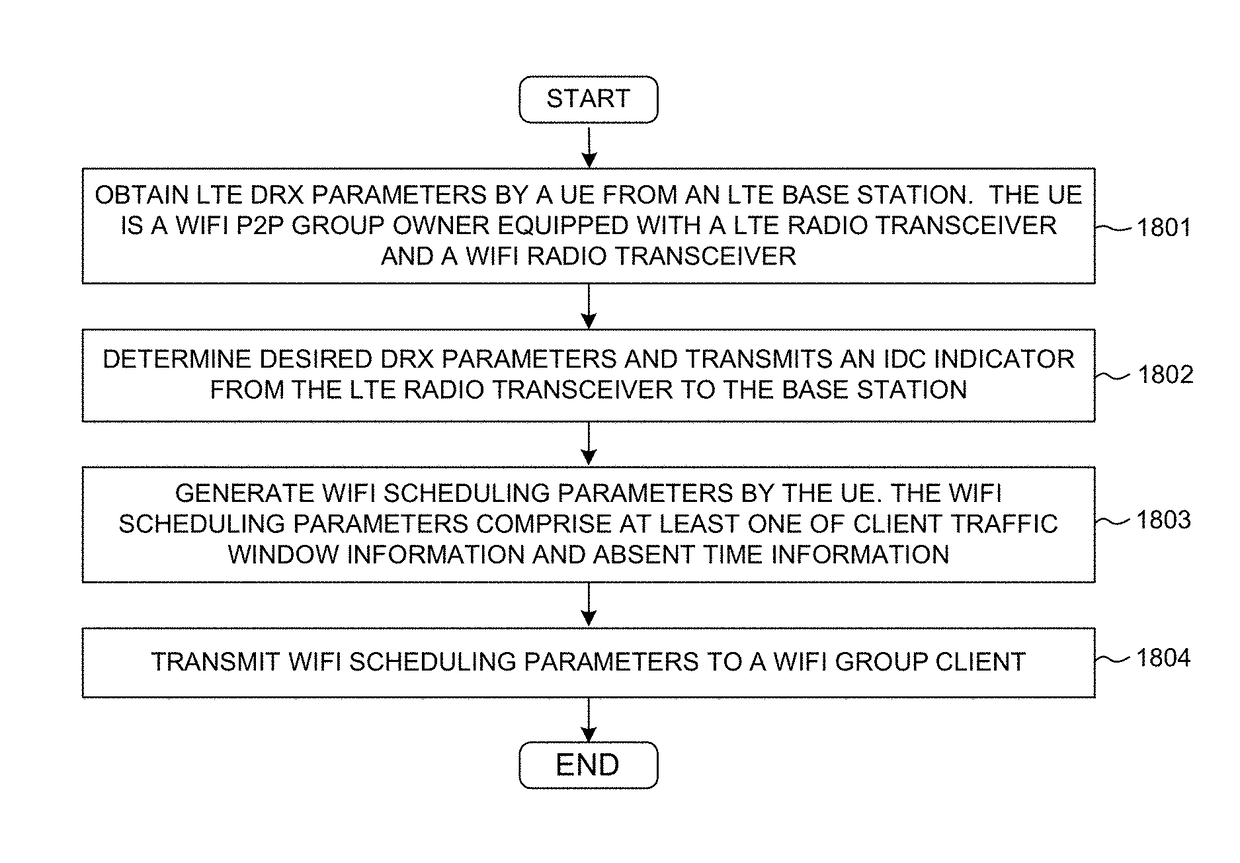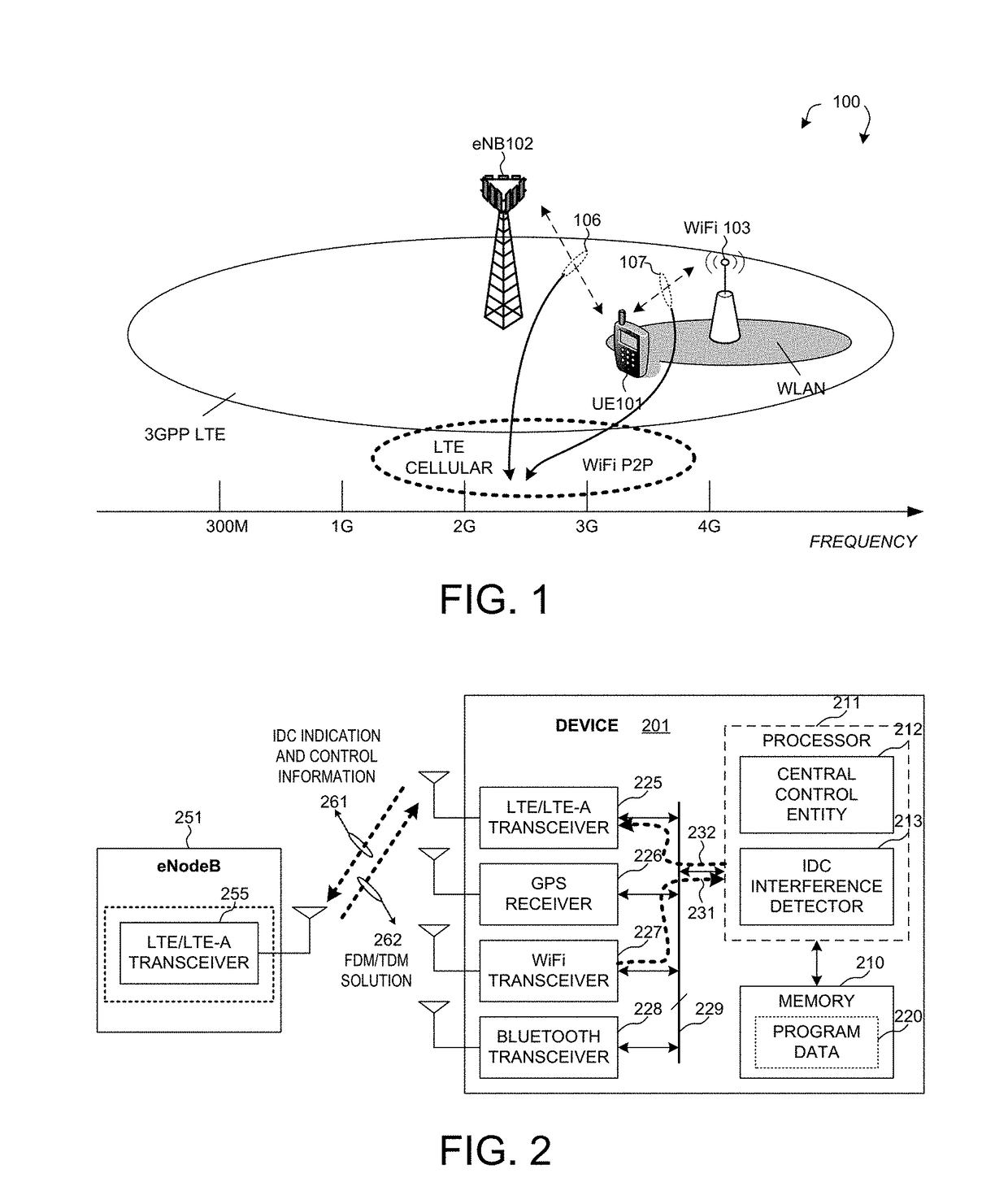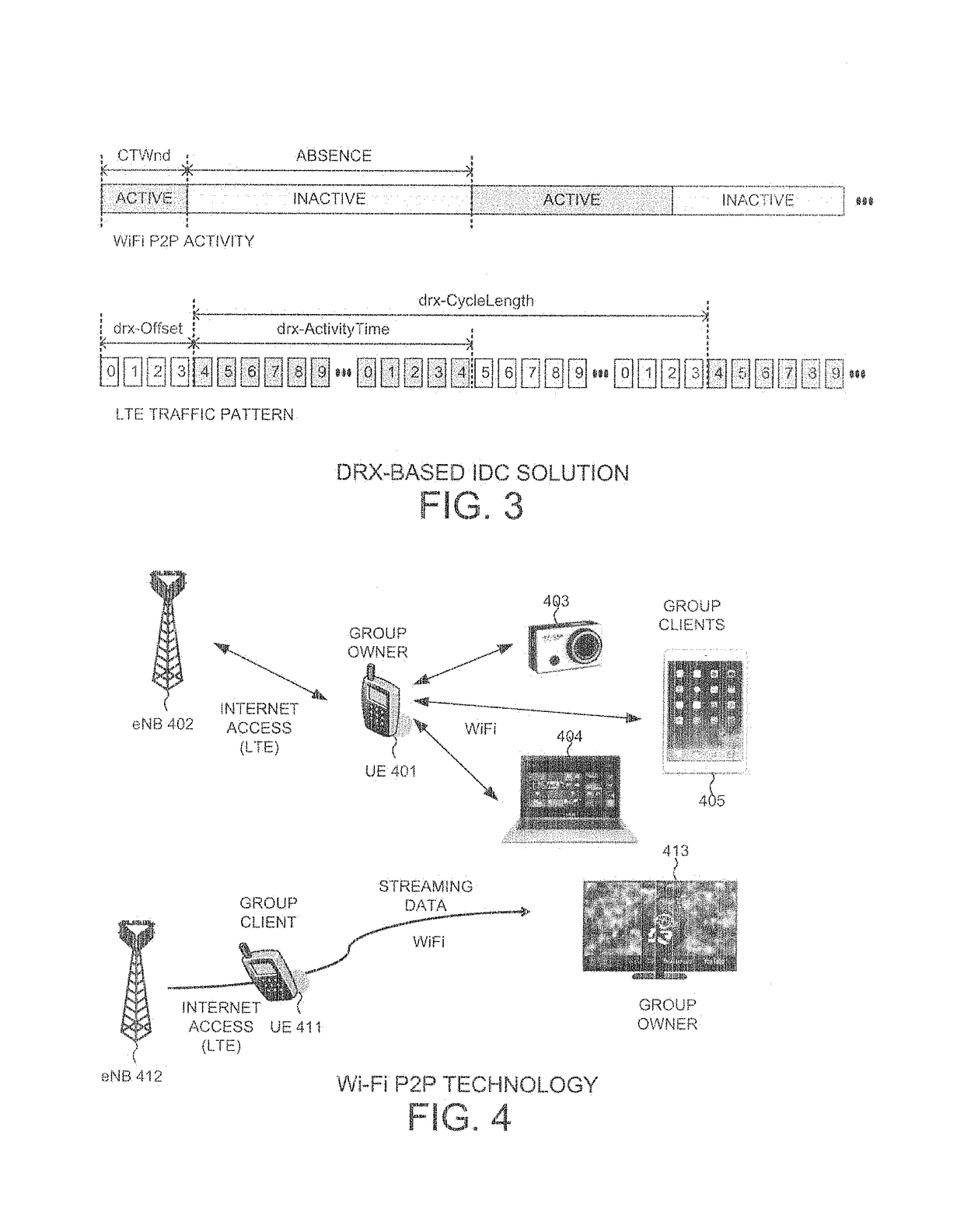Coordination of Wi-Fi P2P and LTE data traffic
a technology of lte data traffic and wi-fi, applied in the field of wireless network communication, can solve the problems of affecting the coexistence performance of multiple radios on the same physical device, affecting the reception of data from the second radio transceiver, and affecting the reception of data from the first radio transceiver, so as to achieve the effect of improving coexistence performance, maximizing efficiency, and increasing throughpu
- Summary
- Abstract
- Description
- Claims
- Application Information
AI Technical Summary
Benefits of technology
Problems solved by technology
Method used
Image
Examples
Embodiment Construction
[0030]Reference will now be made in detail to some embodiments of the invention, examples of which are illustrated in the accompanying drawings.
[0031]FIG. 1 illustrates a user equipment having multiple radio transceivers in a wireless communication system 100 in accordance with one novel aspect. Wireless communication system 100 comprises a user equipment UE 101, a serving base station (e.g., evolved node-B) eNB 102, and a Wi-Fi device Wi-Fi 103. Wireless communication system 100 provides various network access services for UE 101 via different radio access technologies. For example, eNB 102 provides cellular radio network (e.g., a 3GPP Long-Term Evolution (LTE) or LTE-Advanced (LTE-A) system) access, and Wi-Fi 103 is an access point (AP) that provides local coverage in Wireless Local Area Network (WLAN) access. To better facilitate the various radio access technologies, UE 101 is a multi-radio terminal (MRT) that is equipped with multiple radio modules co-located in the same device...
PUM
 Login to View More
Login to View More Abstract
Description
Claims
Application Information
 Login to View More
Login to View More - R&D
- Intellectual Property
- Life Sciences
- Materials
- Tech Scout
- Unparalleled Data Quality
- Higher Quality Content
- 60% Fewer Hallucinations
Browse by: Latest US Patents, China's latest patents, Technical Efficacy Thesaurus, Application Domain, Technology Topic, Popular Technical Reports.
© 2025 PatSnap. All rights reserved.Legal|Privacy policy|Modern Slavery Act Transparency Statement|Sitemap|About US| Contact US: help@patsnap.com



